A couple more upgrades have turned up, so I gave them a quick try. Not everything went to plan as you will see.
CD-ROM
The CD-ROM that was installed on this RiscPC was I think a single-speed affair, it was slow, clunky and really had trouble reading lightly-scratched music CDs without skipping where even my Commodore CDTV could read them fine. I therefore bought this older Creative Labs 48x CD-ROM drive.
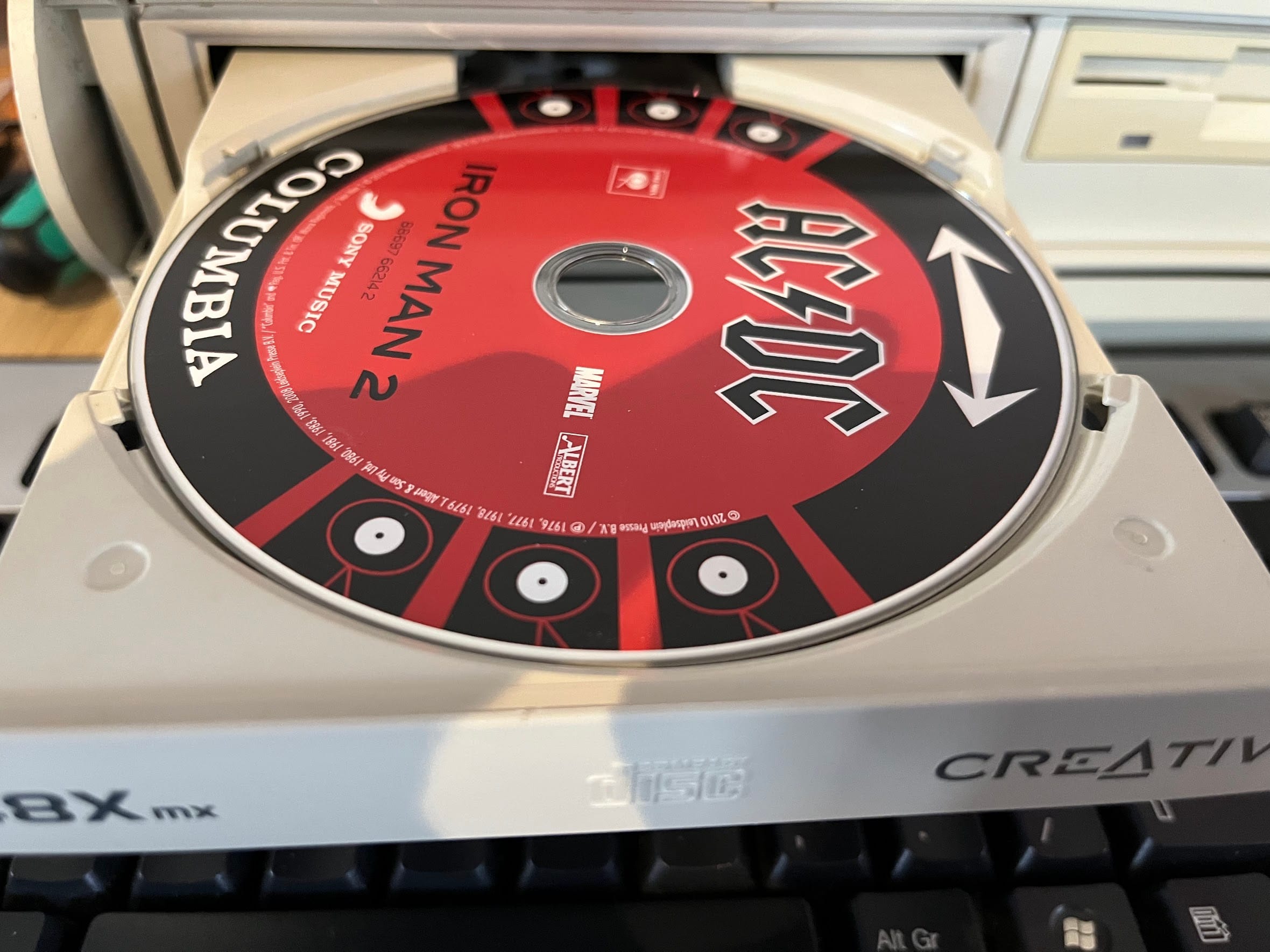
Unfortunately it either couldn’t even detect that CDs were inserted, couldn’t stabilise them when spinning up or sometimes aborted and ejected with the CD spun-up! It was rare that I could get it to read a CD at all, so this is going back to the supplier. I have ordered a different drive to replace it.
StrongARM
Another upgrade I had ordered was a StrongARM CPU. These CPU upgrades are significantly faster than the ARM710, the default clock on the one I purchased was 200MHz which is a little quicker than the 40MHz of the stock ARM710. They are really only hampered by the fact that the system bus is only 16MHz.
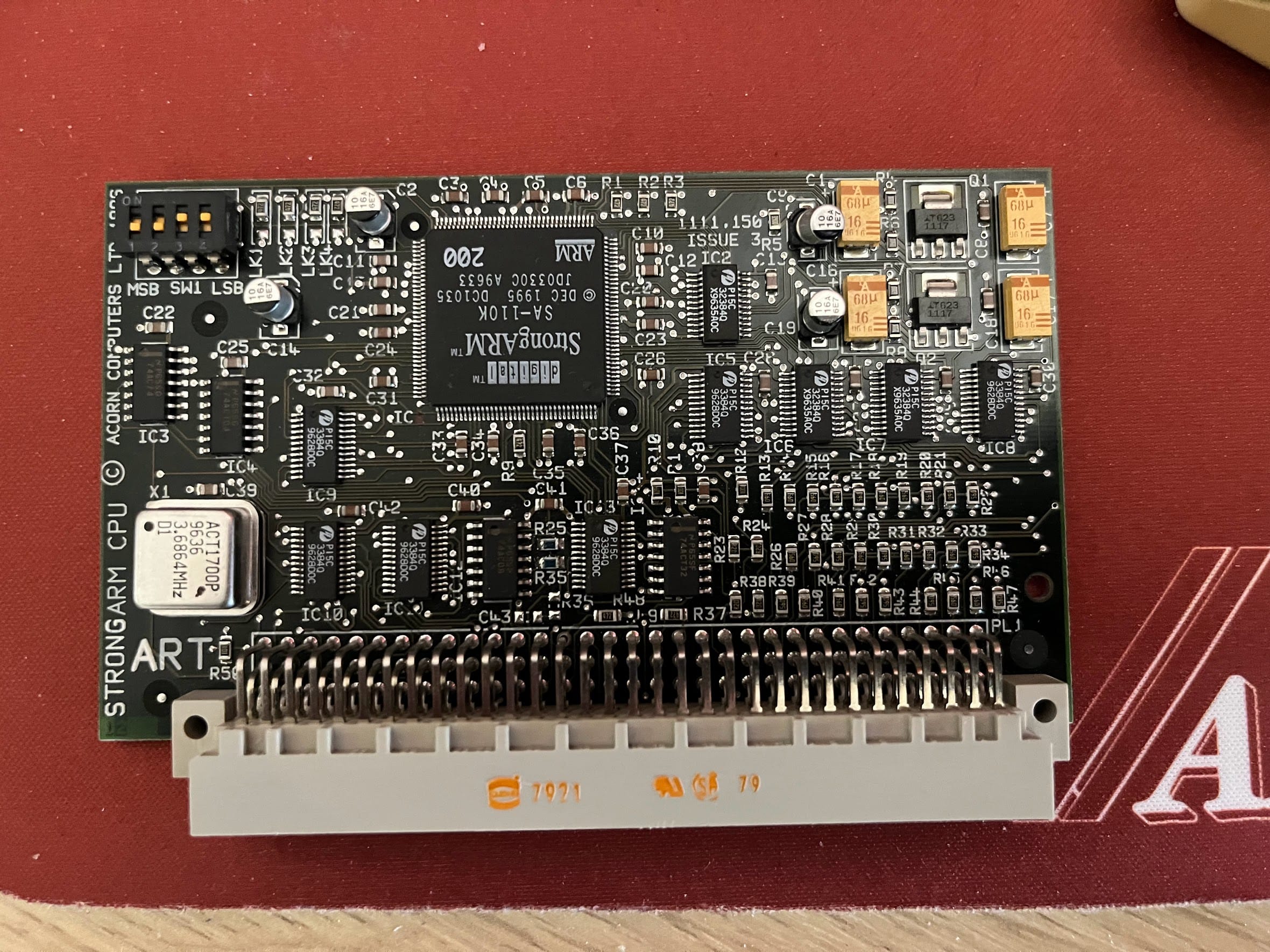
This upgrade is pretty much plug-and-play. Pull out the ARM710 CPU card and plug this in its place. Power on and you get…

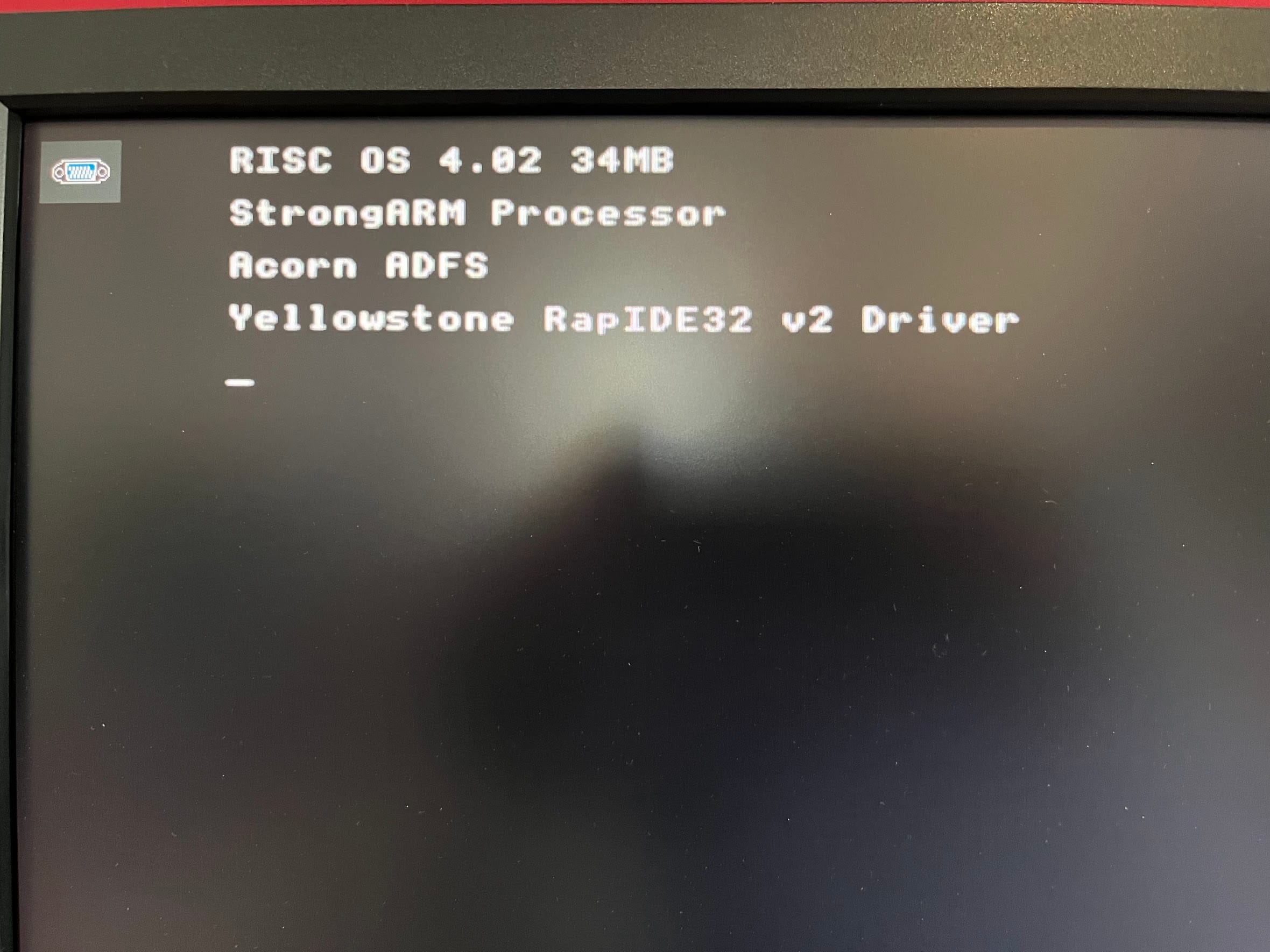
How much faster is it? Here is a benchmark comparison with the ARM710.
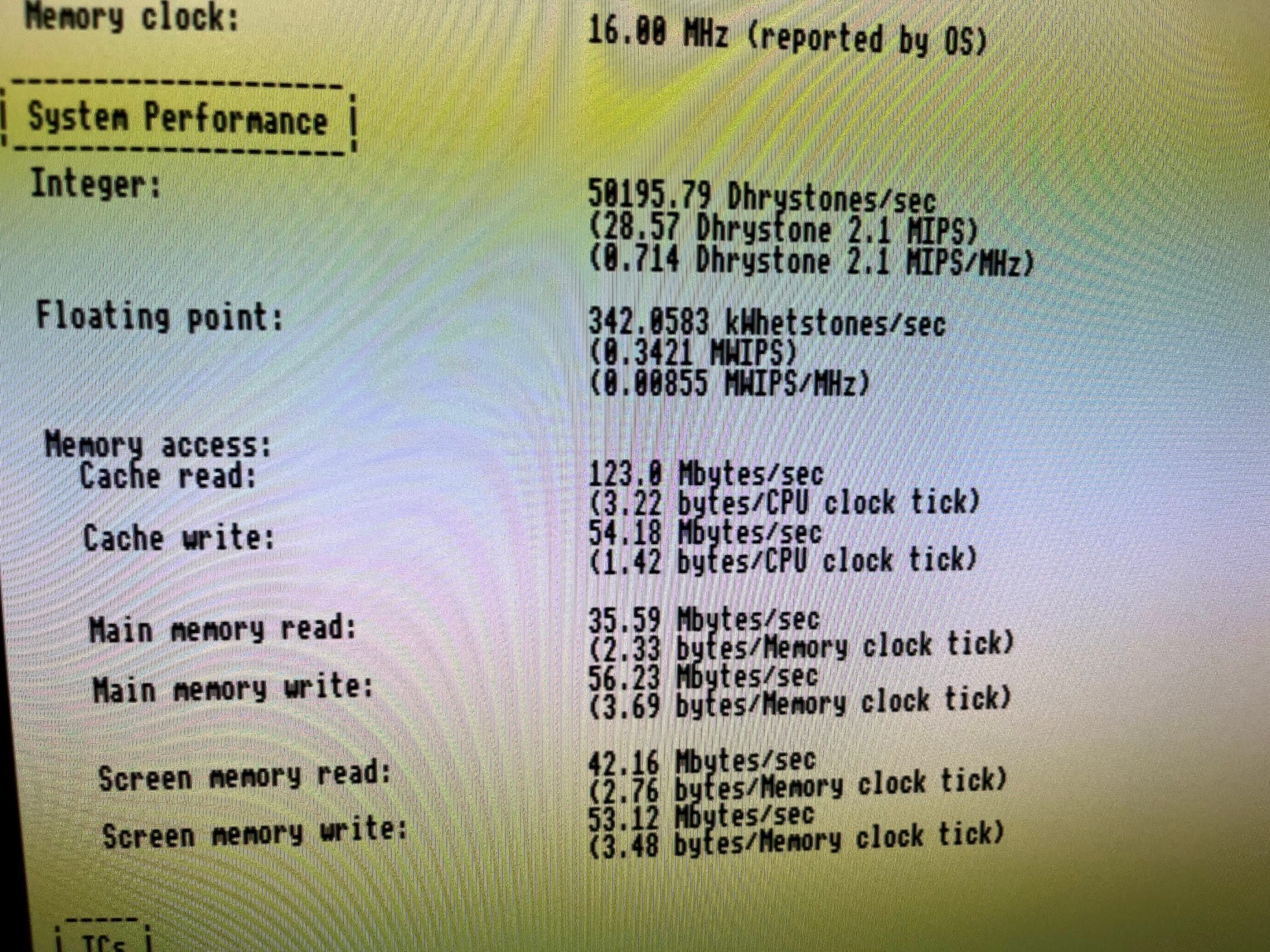
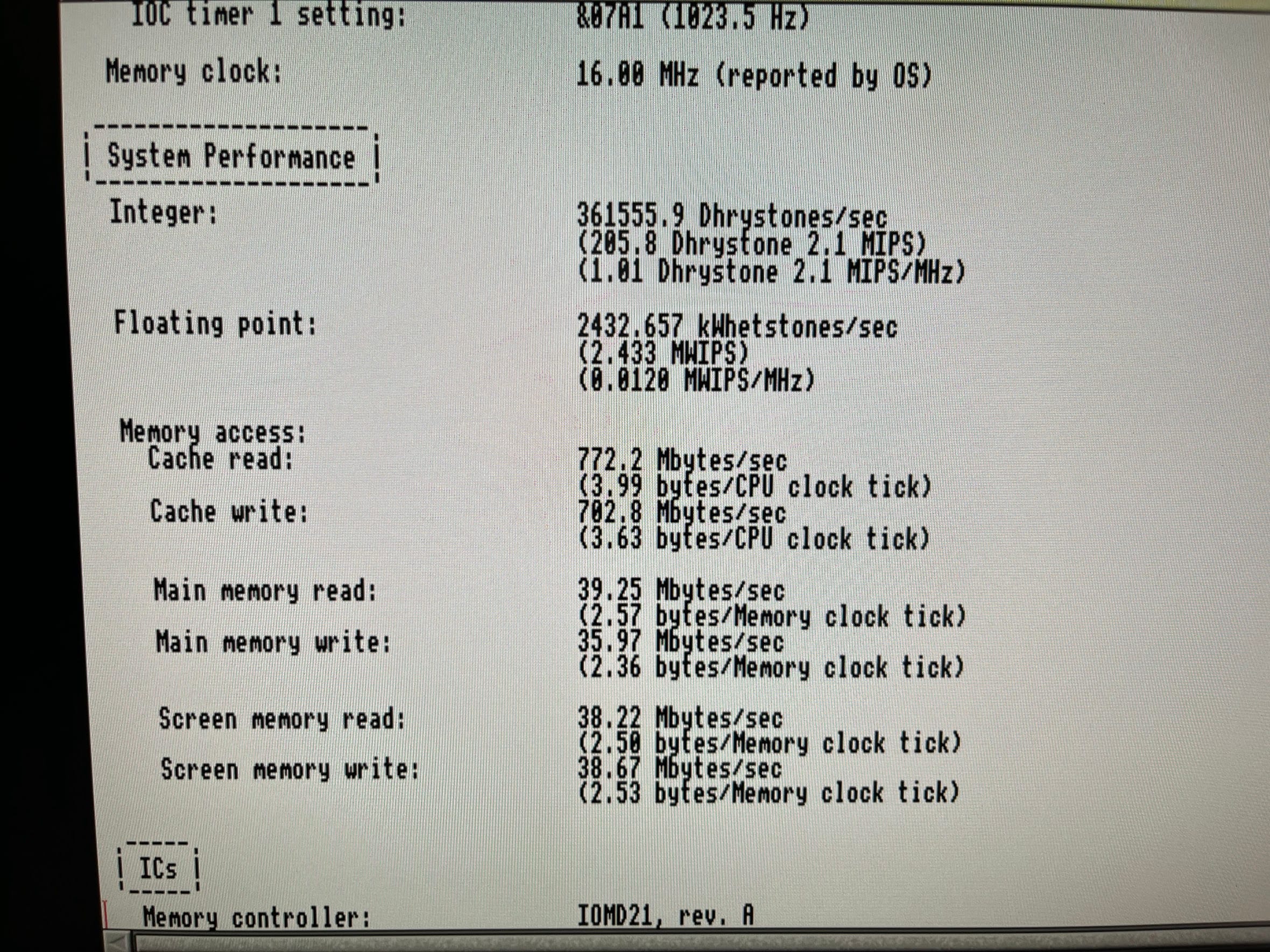
So, we are looking at nearly 8x faster. That is pretty incredible, and the machine feels incredibly snappy to use now. But that is not all, it turns out these boards are very overclockable. It requires cutting of two traces on the PCB that lock the middle two dip switches. With those locked you can only underclock it. My CPU board came with these already cut.
I overclocked mine to 243MHz and ran the benchmark again.

Over 8x and approaching 10x faster than the ARM710. I’m definitely very happy with that.
What does this mean in the real world? Loading this blog on the machine used to take 260 seconds. It now takes 32 seconds.
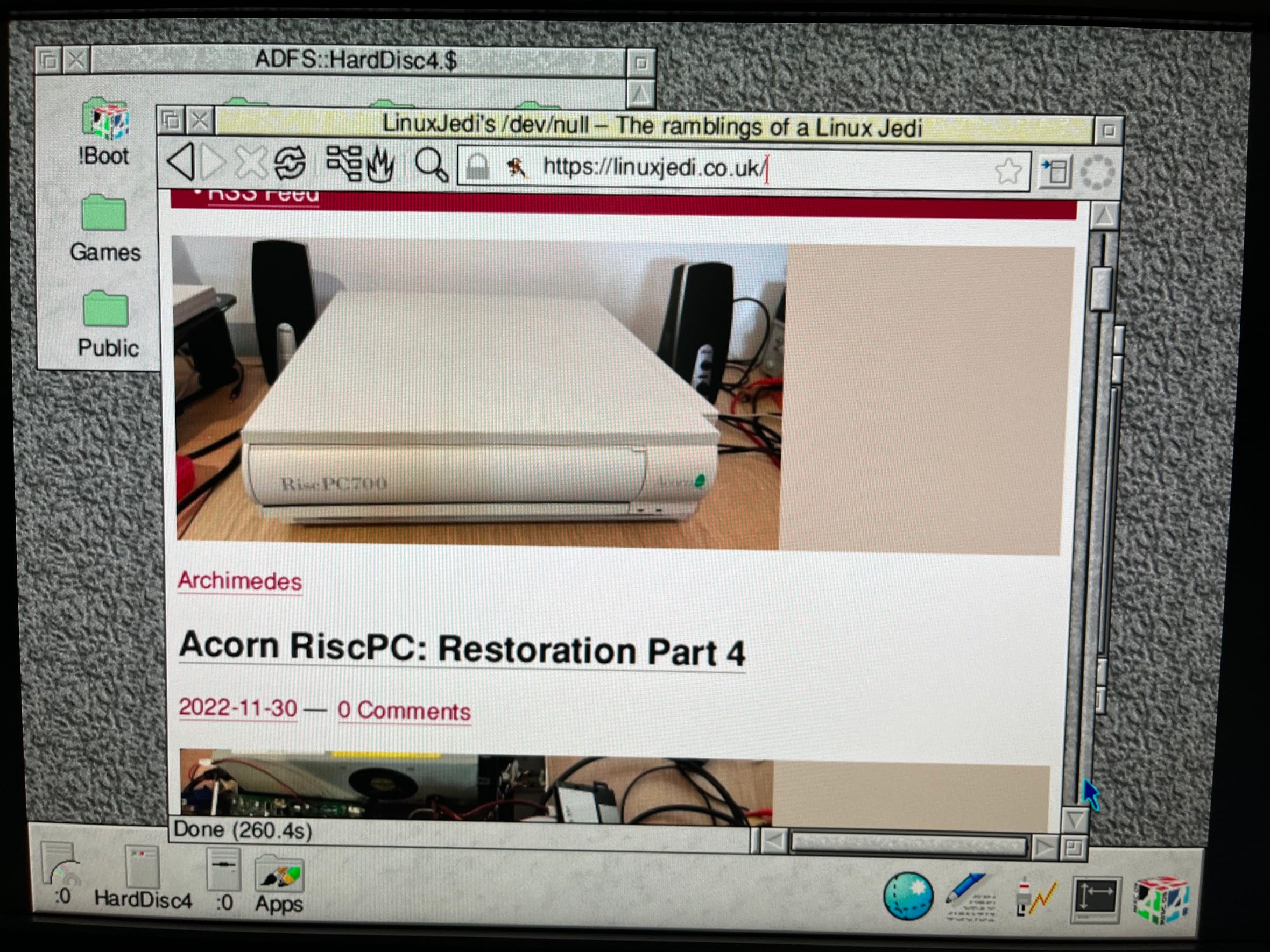
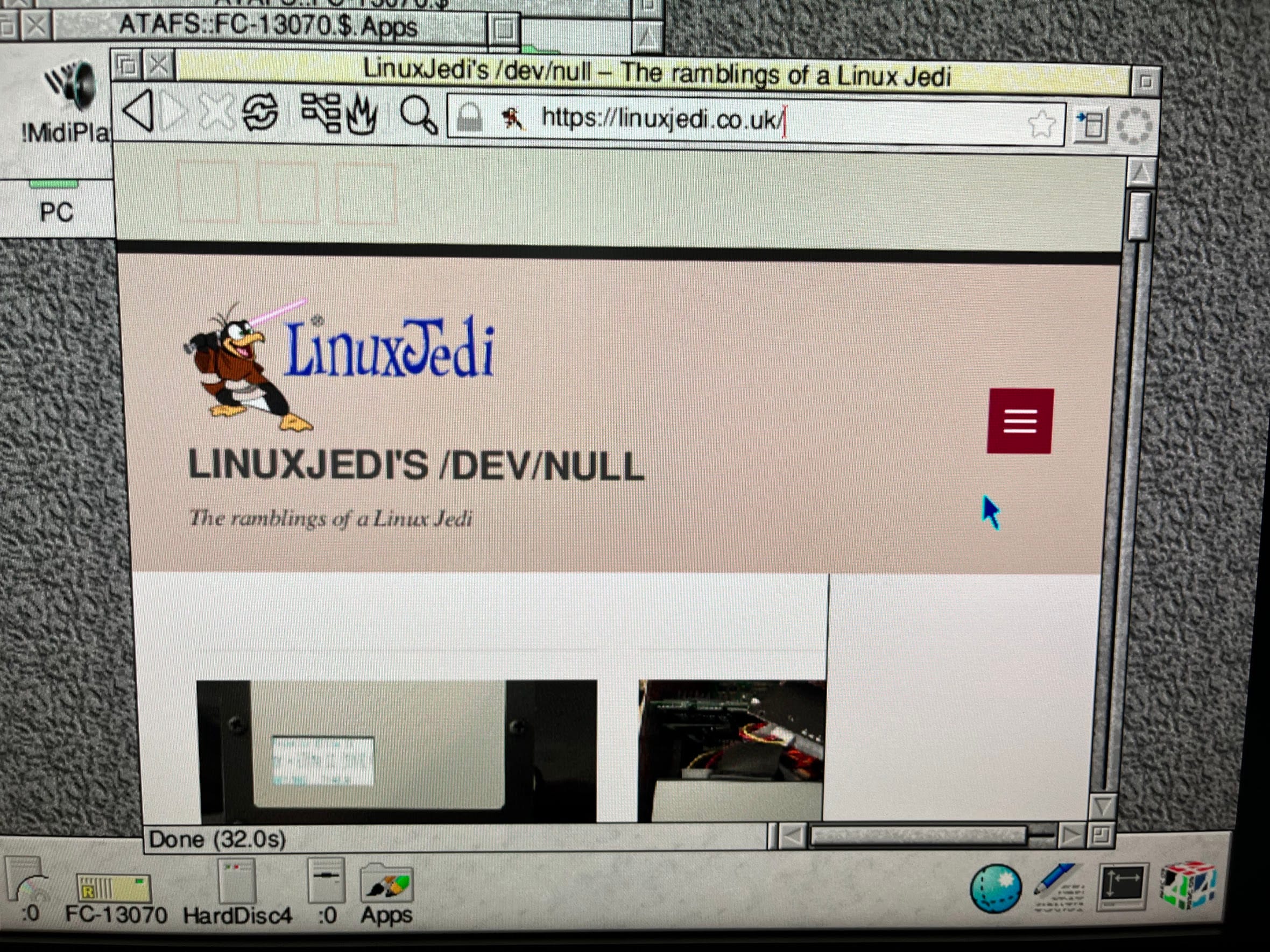
This is one upgrade I was in two minds about obtaining, I’m so happy that I have installed one now.


Leave a Reply